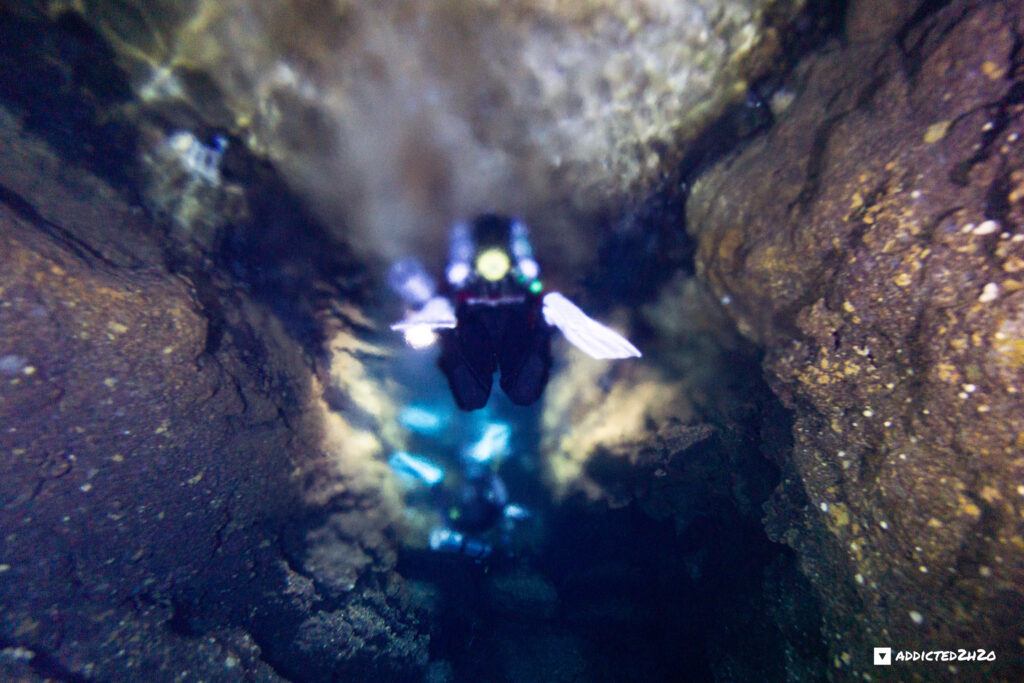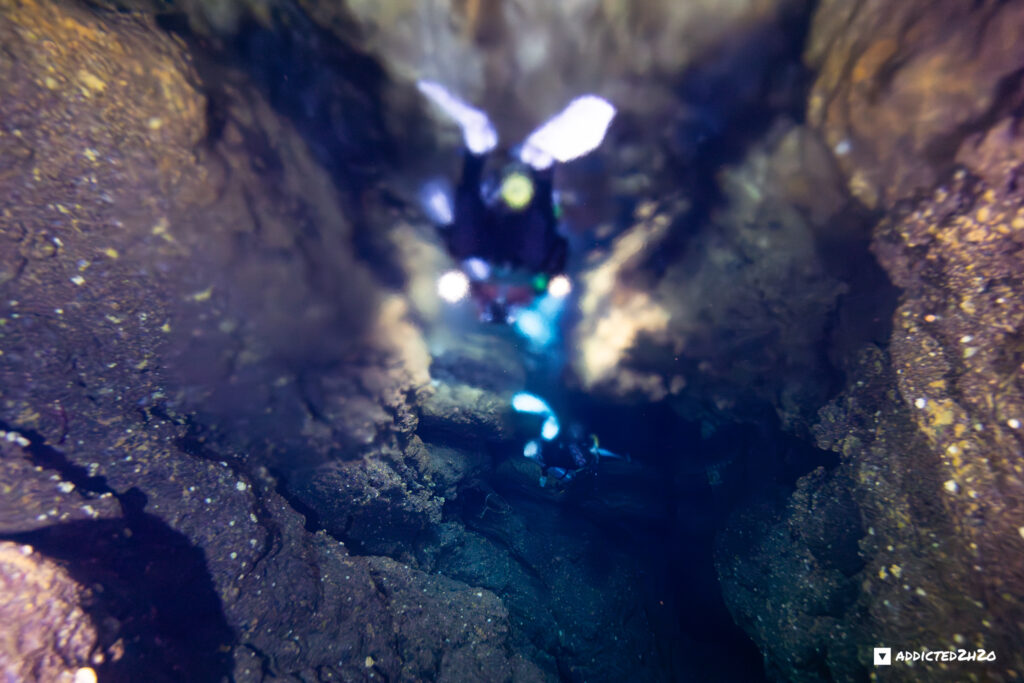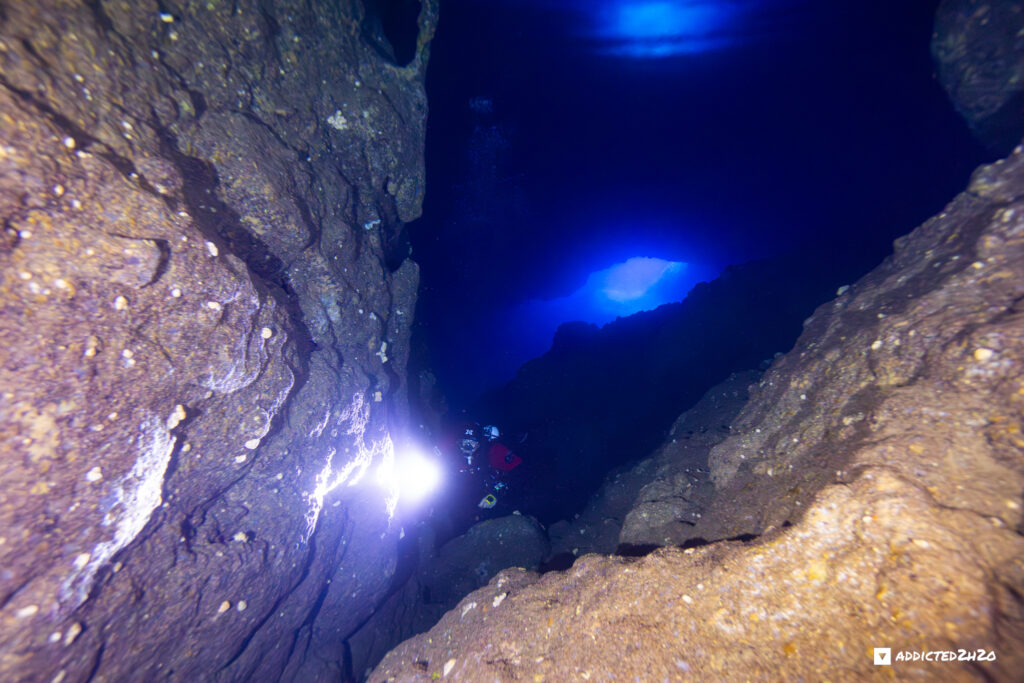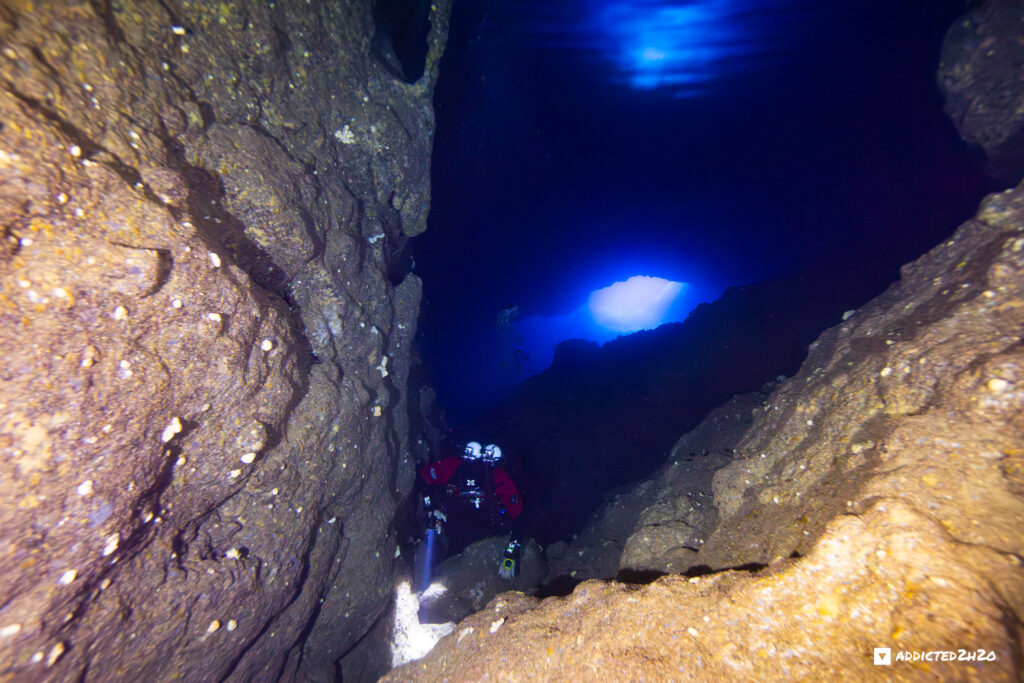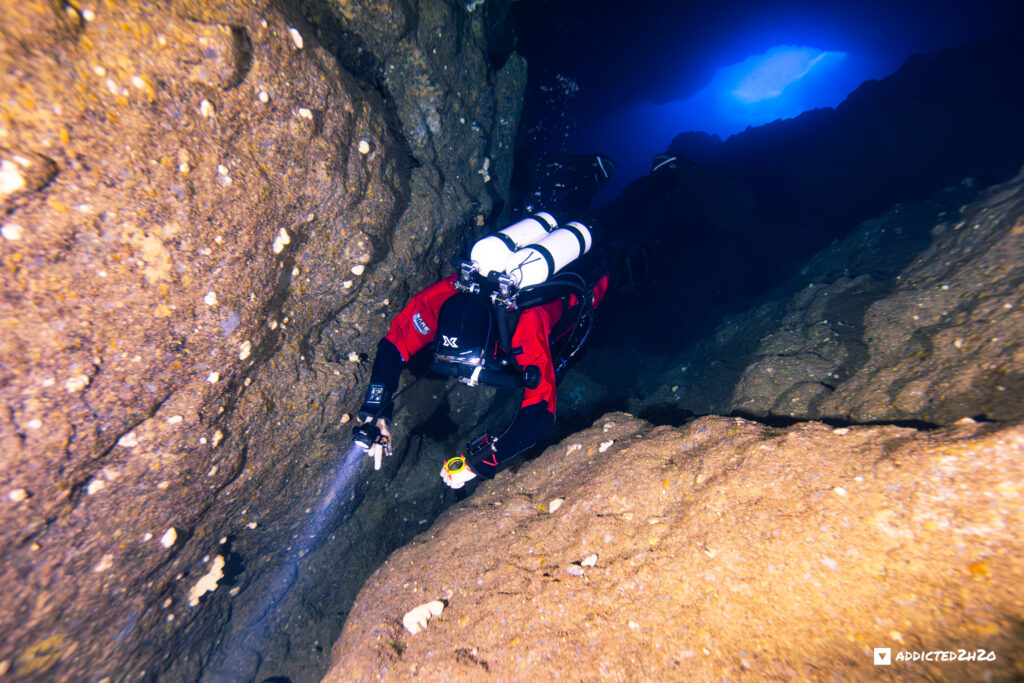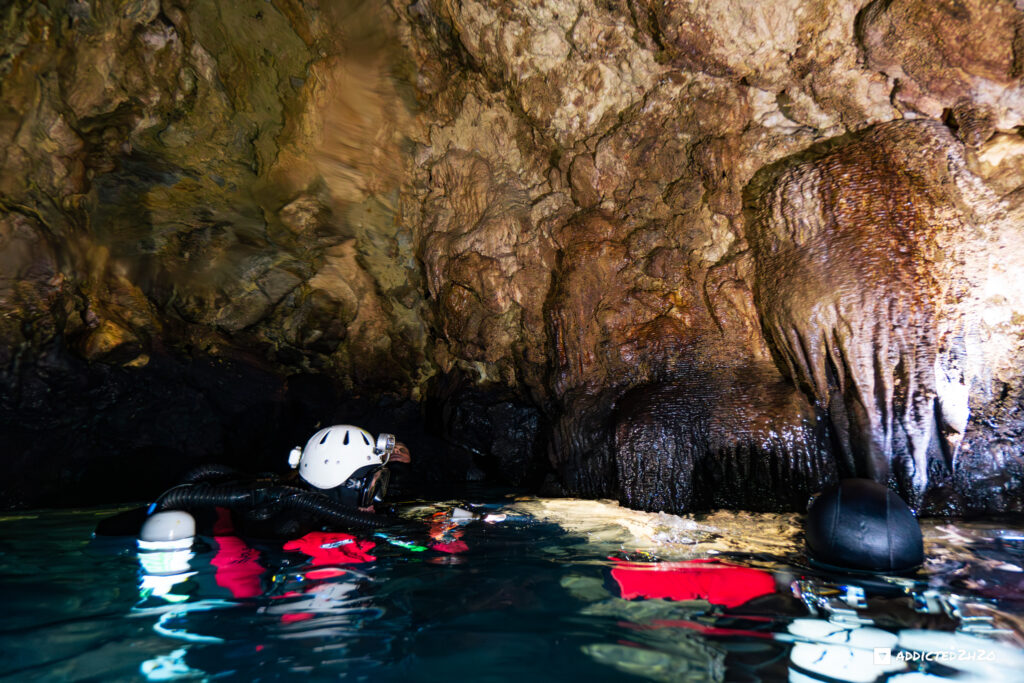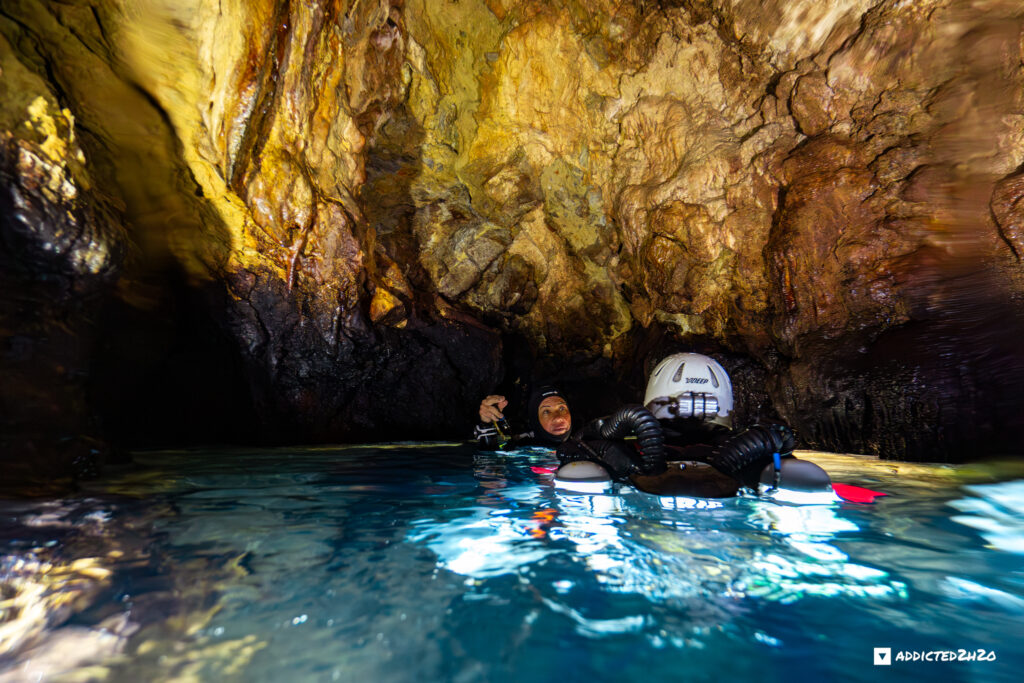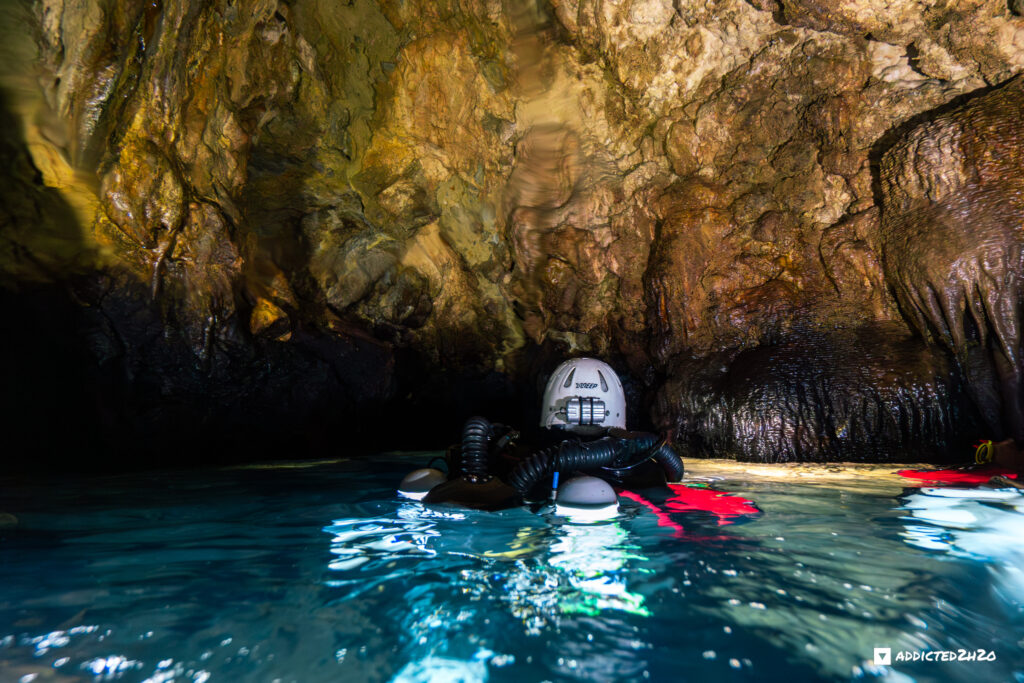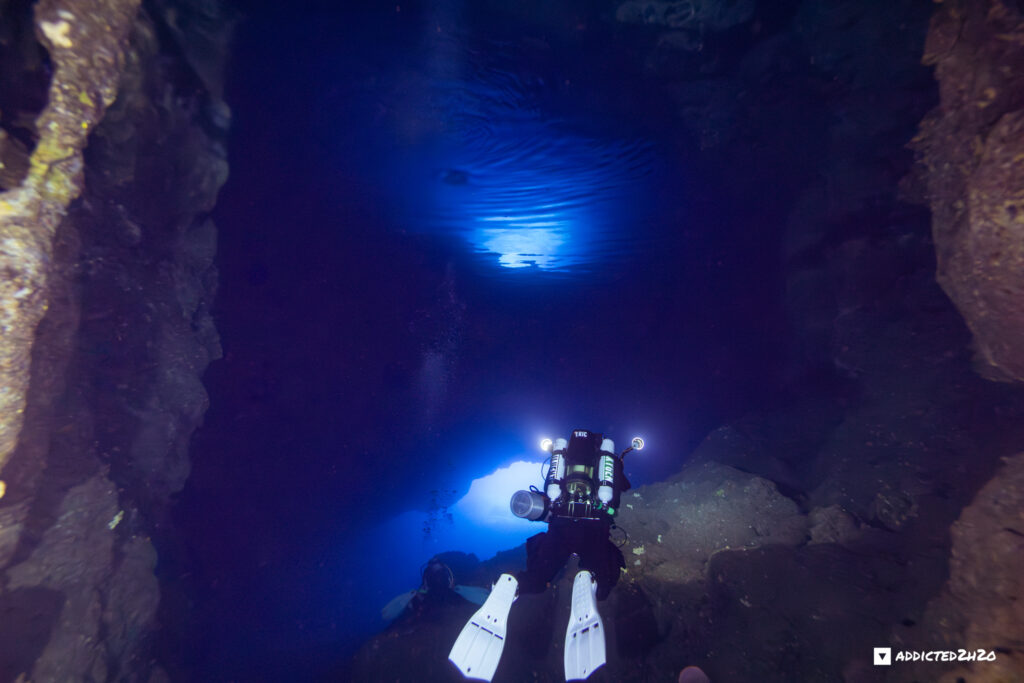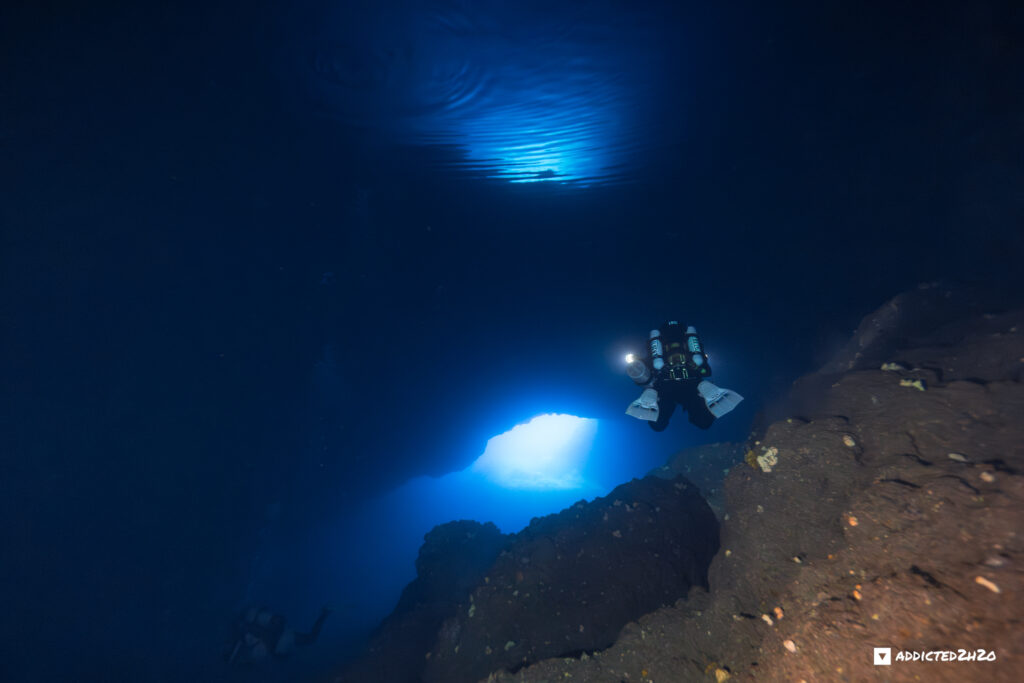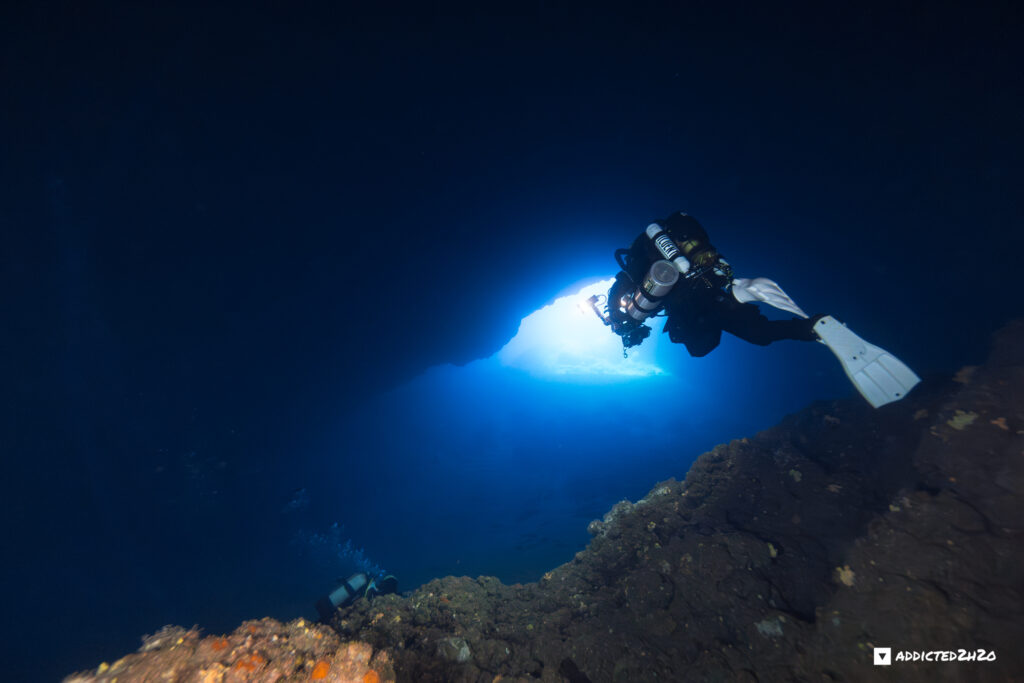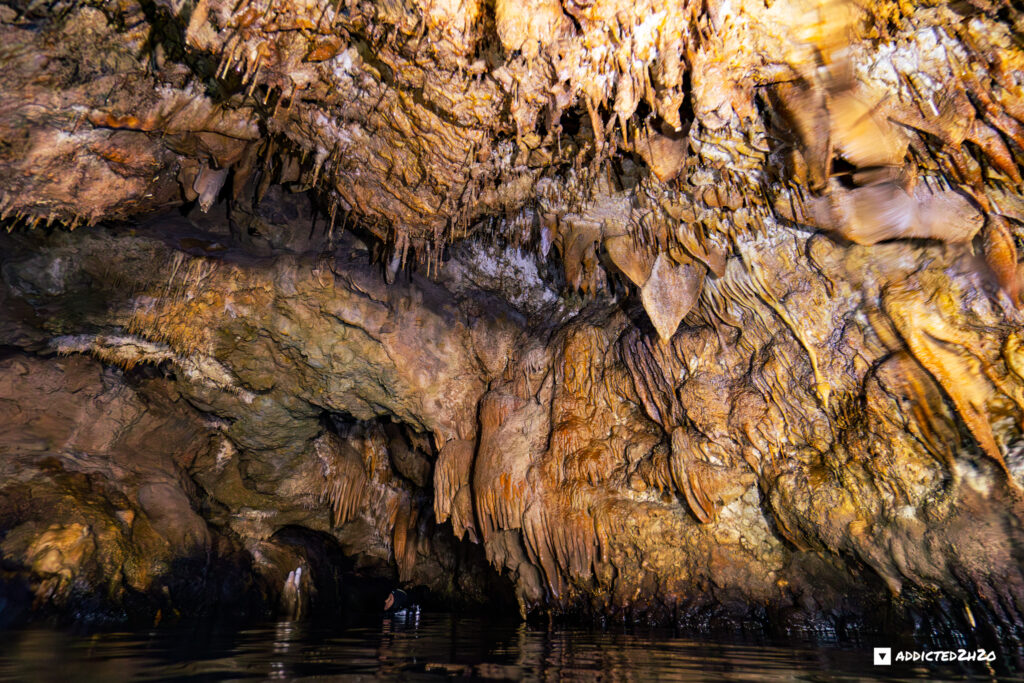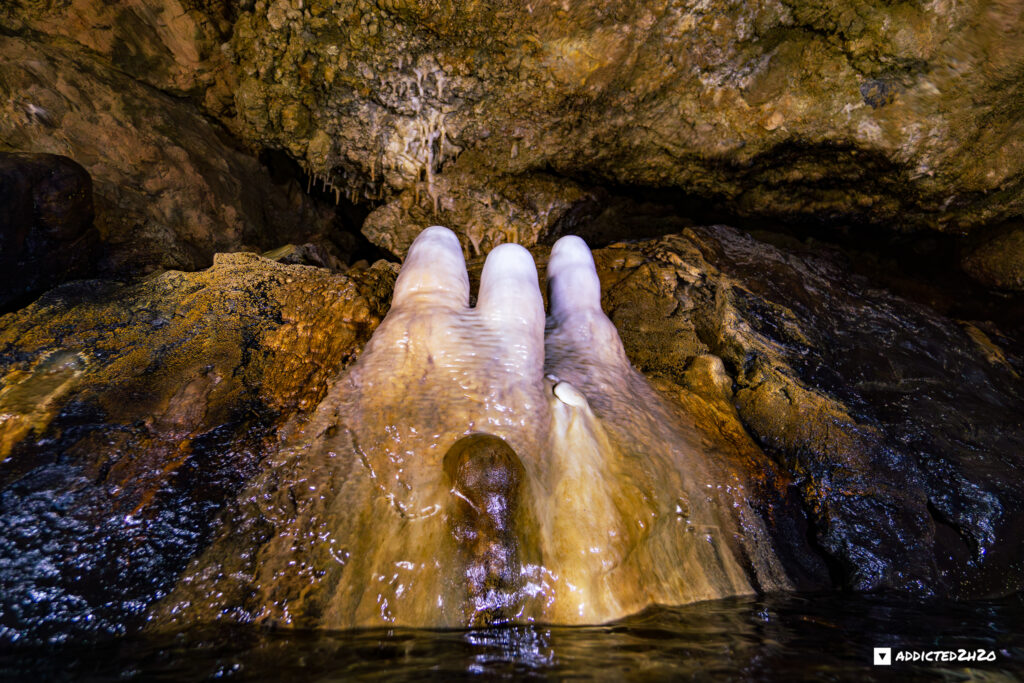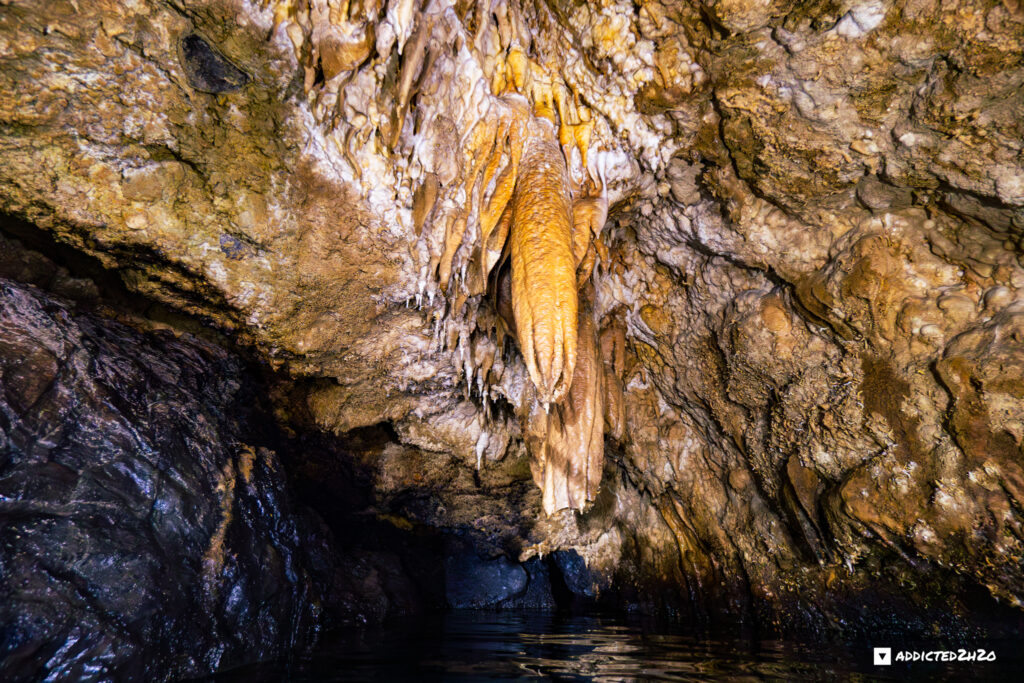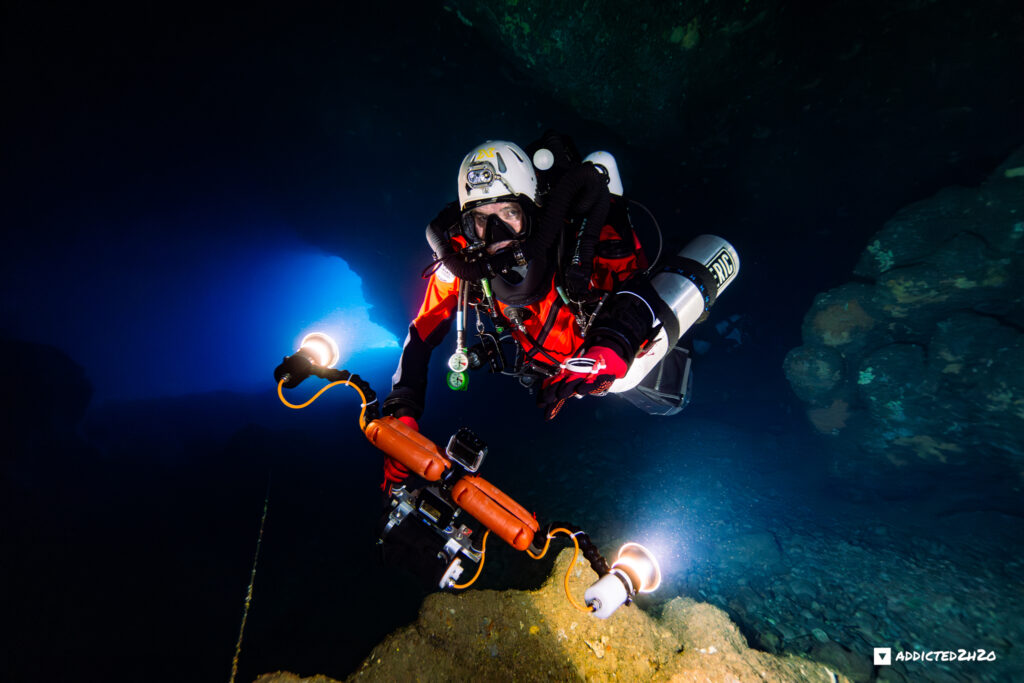FONEAS
KARDAMYLI
One of the most beautiful beaches in Messinia in the Peloponnese carries one of the least attractive names you could possibly imagine. But once you get to Foneas (“Killer”) Beach in Greece, you will forget its unfortunate name and surrender to its magical landscape. The central feature of Foneas is the huge rock in the middle of the sea, which is tailor-made for jumping or diving into the surrounding crystal-clear, blue waters. Foneas Beach is well hidden by the trees which line the path leading to it. It is located quite close to Delfinia Beach—just 4 km (2.5 miles) southeast of Kardamili on the road to Laconia in the Peloponnese.
Marking where the famous Foneas Gorge comes to an end, it is understandably one of the favorite places for locals in the summer. Still a well-kept secret, Foneas Beach is a favorite spot for locals, but it’s never crowded, making it the perfect place for a beach getaway. There are various legends about the origin of the name of the beach. The most common one concerns a pirate who was shipwrecked and beached there. He was hiding in the nearby cave until his ship was repaired, and, in the meantime, he would rob and kill all those who passed by. Thus, this explains the origin of the local tradition of naming the beach Foneas.
However, despite the terrifying name, Foneas is truly one of the most beautiful beaches in the Peloponnese. It is a pebble beach with crystal-clear, blue-green waters and a verdant natural landscape with rocky cliffs surrounding it. There is only one little cantina that sells beverages on the beach, and there are no umbrellas or sunbeds, so you need to go well prepared with your own supplies. However, once there, you will forget about the lack of amenities and simply enjoy the pristine waters and imposing natural scenery of the area. The untouched beauty of the site is unparalleled, and it is widely considered one of the most stunning beaches in the area.
Approximately one hundred meters from the beach is located one of the four underwater caves. The team visited the area in June of 2024 and conducted a three and a half hour dive visiting all four of the caves. An excellent dive and we wish to thank Anthousa Papadopoulou for diving with us and showing us these truly unique caves.
Divers:
Erikos Kranidiotis
Stelios Stamatakis
Anthousa Papadopoylou
Ioannis Simiridis
SUPPORTED BY
ADDICTED2H2O
Do what you can’t
